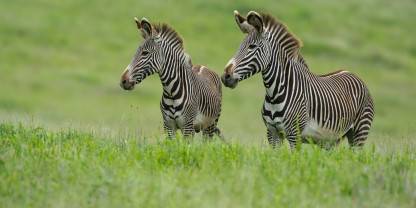Average Expert Rating
Rating Breakdown
Write a User ReviewRanchland Reclaimed for Wildlife
Read more
small exclusive lodges or tented camps, and collectively they protect the country’s largest populations of black rhino, greater kudu, Jackson's hartebeest, Grevy’s zebra and African wild dog, as well as plenty of lion, leopard and other predators. The scenery is also impressive, with the snow-capped peaks of Mount Kenya prominent on a clear day.Laikipia: The Future of Kenyan Conservation
Read more
open only to those staying at the lodges within conservancy boundaries, and as these are privately or community owned lands where night drives and off-road driving are permitted, you’ll have that all-too-rare pleasure of having what you discover all to yourself and be very close to the animals.The Future of African Conservation
What I find most striking about a safari to Laikipia is
Read more
how obviously conservation here is run as a business. There are numerous lodges set on private and community lands and the safari experience is very exclusive if not authentically wild. In most cases you will be one of only a handful of guests and staff will go out of their way to show you what you want to see. You want rhino? Then they will find you one. Lion? Not a problem. But it’s not just the wildlife viewing that is the attraction. Being on private land means that visitors can participate in horse-riding safaris, walking safaris, night safaris and numerous other activities. Lots of emphasis is also placed on community and cultural interaction. Although, with probably around two dozen conservancies here, the experience is different at each one, so check out the website of each lodge carefully before committing to one.To summarise, while there are wilder areas in Kenya there are few that are as beautiful, so rich in wildlife and, most importantly, where your presence really does benefit both locals and wildlife. For that reason I would say that for anyone who can afford the often high prices, Laikipia is an essential experience for the ultimate in exclusive safari.
A Patchwork of Conservancies Where People, Cattle and Wildlife Coexist in Harmony
Laikipia Plateau in central Kenya covers an elevated area of approximately 9500km2 between the Great Rift Valley and Mount Kenya. Rather than being one entity, it is a mosaic of private ranches and community conservancies working together to protect habitats and promote sustainable land use. Although it’s a mixed bag, these private reserves are generally well stocked with wildlife including some of the northern specials such as reticulated giraffe and Grevy’s zebra. Most notable are the rhinos; both black and white rhino are very common. Accommodation is mostly in the form of small eco-friendly lodges and tented camps offering all-inclusive packages. The experiences offered are varied. Walking safaris and horseback riding are exciting alternatives to the usual game drives and you might also be offered a cultural tour to a local Samburu community.
Beautiful Landscapes and a Sanctuary for Black Rhinos
Laikipia County is in the middle of Kenya. The conservancies here (mostly former ranches) are leading the way in black rhino protection, with around half the country’s population in their care – and more. Ol Pejeta Conservancy, for example, is home to the last two northern white rhinos in the world (which you can meet) and has a special endangered species enclosure for black rhinos, Grevy’s zebras, Jackson’s hartebeests and other at-risk animals. The jagged peaks of Mount Kenya, the country’s highest point, are visible when the weather’s clear; it’s a beautiful landscape of rolling hills. It’s also an easy drive (around four hours) from Nairobi and there’s a variety of accommodation options from super-luxe to budget/self-drive. I love all the activities available in Laikipia, expanding the offering beyond game drives, including meeting the anti-poaching dogs at Ol Pejeta.

